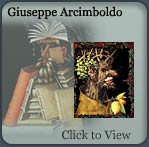Free Art LessonAn Afternoon's Study After Joseph Mallard William Turner |
||||||||||||||||||||||
The Great Falls of the Reichenbach, Part 2 of 2
4. Working the Rock FaceIt makes logical sense to work from top to bottom to prevent unwanted smudges, and if you're right handed, it pays to work from left to right, and therefore I start the refining process with the rock face at the top left. Sitting aloft the top of the rock is the suggestion of trees that I create with little circular motions of an F and 2H pencil; the rock face will be hatched - lots of small parallel lines follow the form and direction of the geological outcrop. Before moving to this stage I deepen a little of the underlying tone and add one of the first harder edges to better separate the side of the rock wall from that of the waterfall. 5. Texture and Form Through Hatching
This is the stage where the blending stops and the drawing starts. Whilst we could render these rocks with carefully blended tones and values, all blended with no visible pencil marks, it would lack a certain character or the interesting and exaggerated textures and sense of direction, that hatching brings. To best follow the form and motion of the rocks it is vital to return to those visualisation techniques. Look at the rock face, picture it in your mind, imagine it on a smaller scale where you can run your hand over it to feel the protrusions, nooks and cranny's and texture. If you can see it and feel it, you can draw it. Think of your pencils as weapons, and sharpen them to a fine point - you want them to be effective. I alternate between my 2H and F with the occasional few strokes from the mechanical 2B, and apply a fair amount of pressure, almost scratching into the surface with my hatching lines. 
For general broad and long hatching strokes, I hold the pencil close to the top as shown in the photograph on the right. For a smaller area of detail my grip is much lower down, close to the tip and the angle of the pencil is near vertical. Hatching techniques are one of those more intuitive activities that improves with practice and easier to demonstrate than to describe. 
You may notice a black dot on the top left corner of my pad. This was made with a lot of pressure from my mechanical pencil as a tonal reference, giving me a rough guide between the white of the paper and this deep near-black tone, and thus allowing a source to compare the values in my work. Given the cheapness of paper and the lighter range of pencils used in the drawing, I was not striving to match all of Turner's values, but rather allow myself enough values to at least keep them relative to one another. Striving for the absolute maximum range in a pencil drawing can be time consuming and requires decent paper. Some artists will use charcoal pencils to push values to the max. The rocks on the right all slope down towards the waterfall, and the eraser is once again used to remove and lighten some areas to give the suggestion of light catching the edge of these giant boulders. The eraser is also dabbed with little short taps to create an illusion of spray just above the level of the foreground. 
6. ForegroundTo distinguish the foreground from the background, some harder edges are required. I begin by marking these first; their juxtaposition alongside the lighter waterfall spray helps break up the composition into two main areas, and is made more dramatic by the use of dark against light such as the small suggestion of trees that jut up from the foreground into the whites of the fall. One of the tricks to create drama and atmosphere, which Turner knew all too well, is the careful use of light against dark, and it's a useful trick to employ in your own drawings/paintings. Some details are difficult to fathom in the original painting. For example there are a couple of obvious goats, but then some white specks appear on the right. There is no need to make such details explicit. It is good to have features and areas for the imagination to fill in. They may be seen as white coloured boulders or some form of live stock, and there is no need to add faces and little legs at this scale. The foreground is rendered as the background, with multiple layers of hatching, built upon the underlying tones from our earlier stages of the drawing. 
In the foreground we see how Turner has artistically used the light against dark concept in his tree construction. The tree in the bottom left is very light, but behind it sit contrasting trees whose trunks represent some of the darkest areas in the drawing. 
The eraser is employed once again to create some of these tree trunks, and the edges of the branches tidied up with a little shading from a 2H pencil. More tree suggestions are added beneath the waterfall with steady and more detailed strokes of the pencil to expose the smallest suggestion of tree trunks. 7. FinishingWith the foreground completed the darker values encapsulate the sides of the paper to draw you back towards the light. Some of the sharpest/hardest edges were used in the fallen tree that sits on the bottom right boulder; the dark shadow values beneath the trunk, contrasted against the lightness of the trunk helps give focus without being too overbearing and stealing attention from the rest of the composition. The water suggestions in the foreground were laid in with the blending stump to keep the edges very soft. And this concludes this short afternoon's study. I Hope you've found it useful.
| ||||||||||||||||||||||













